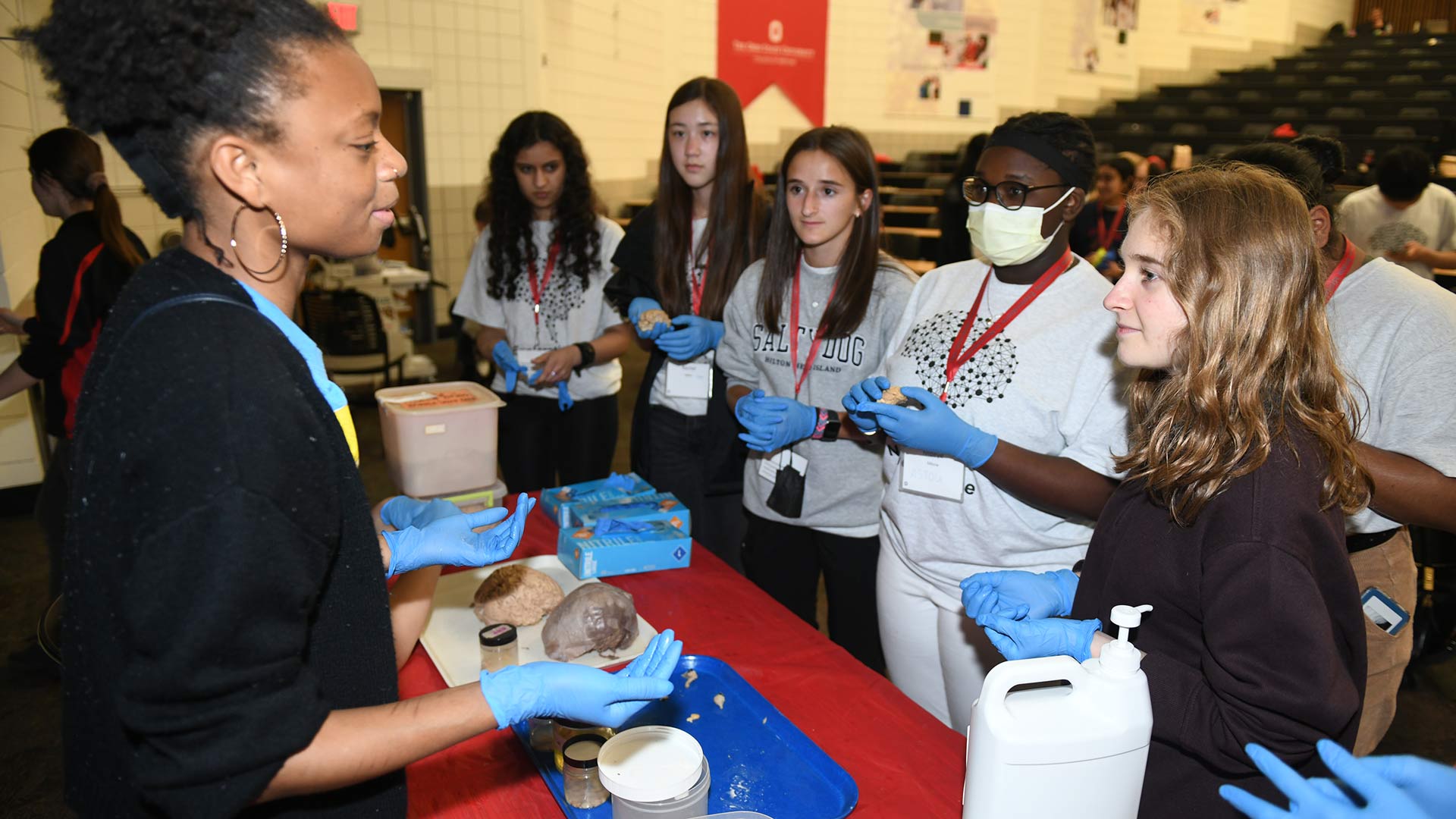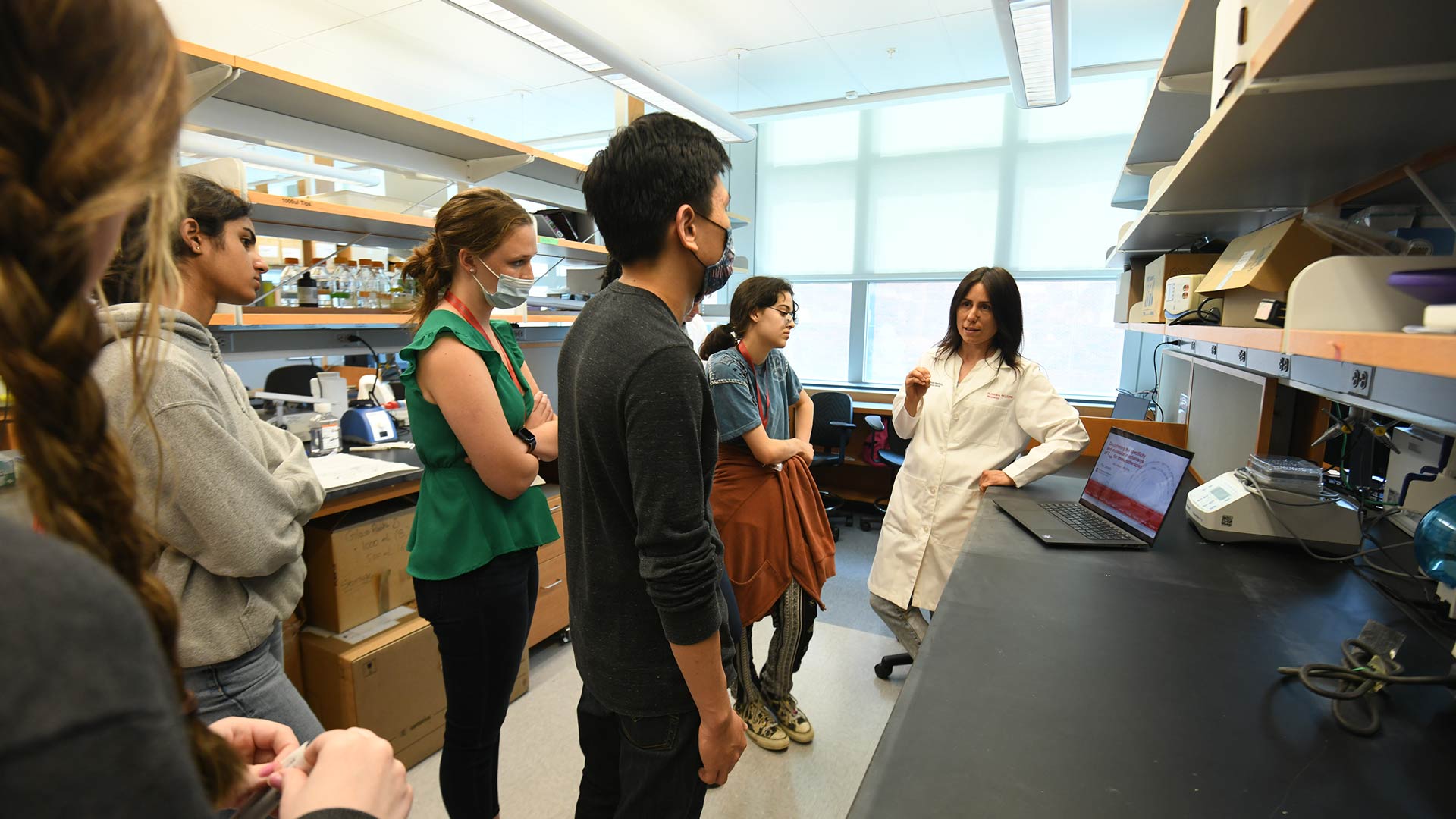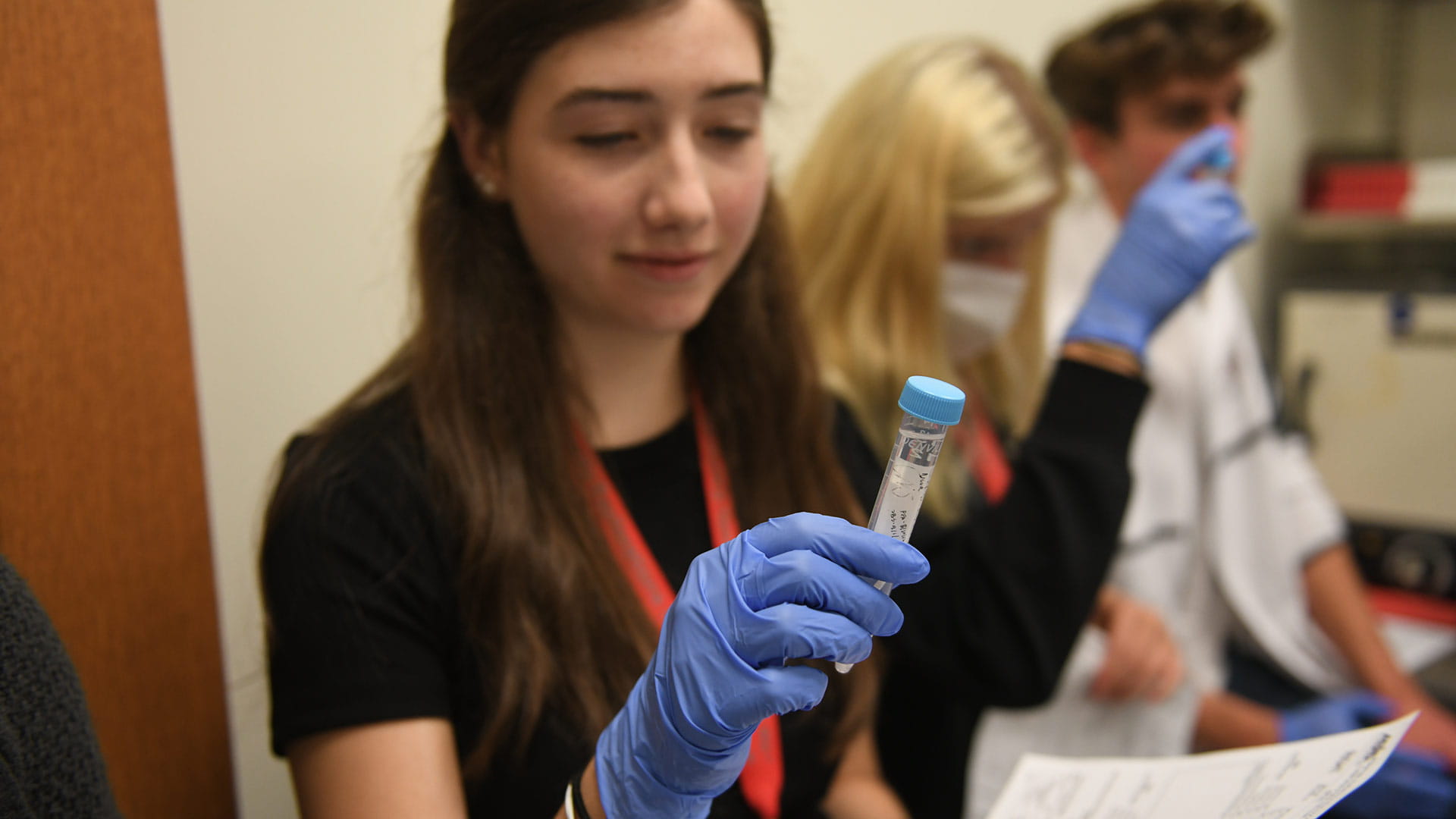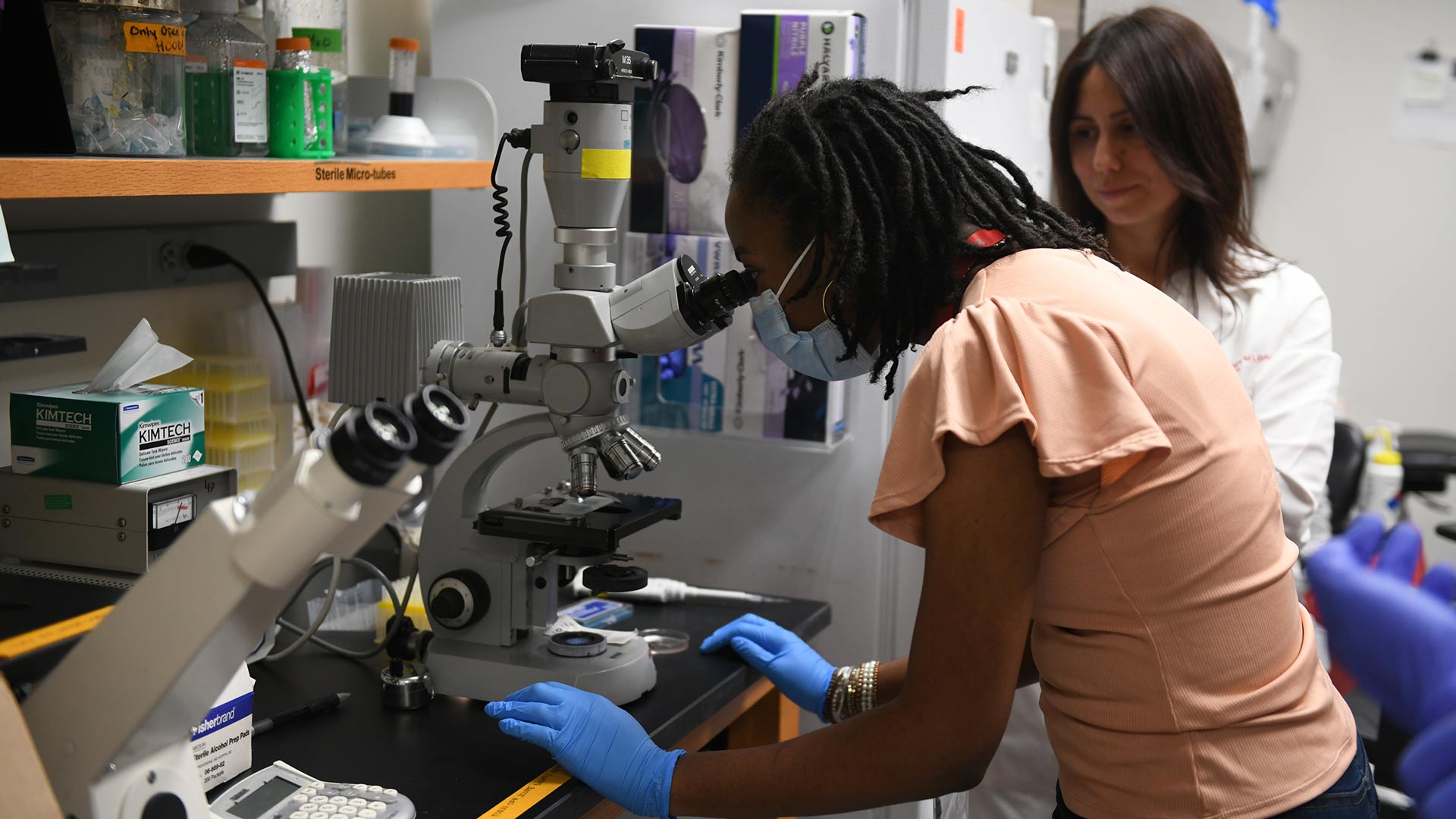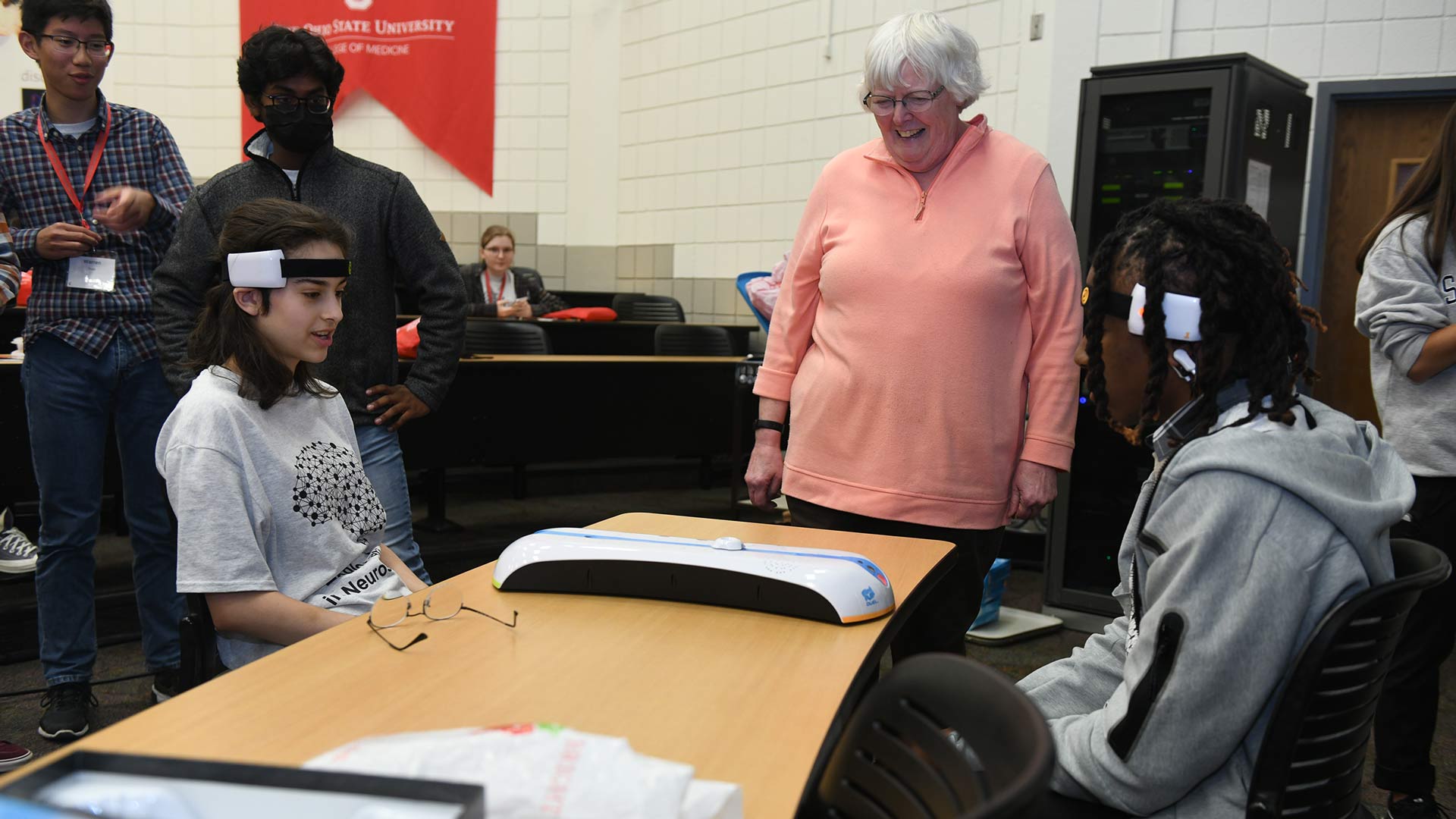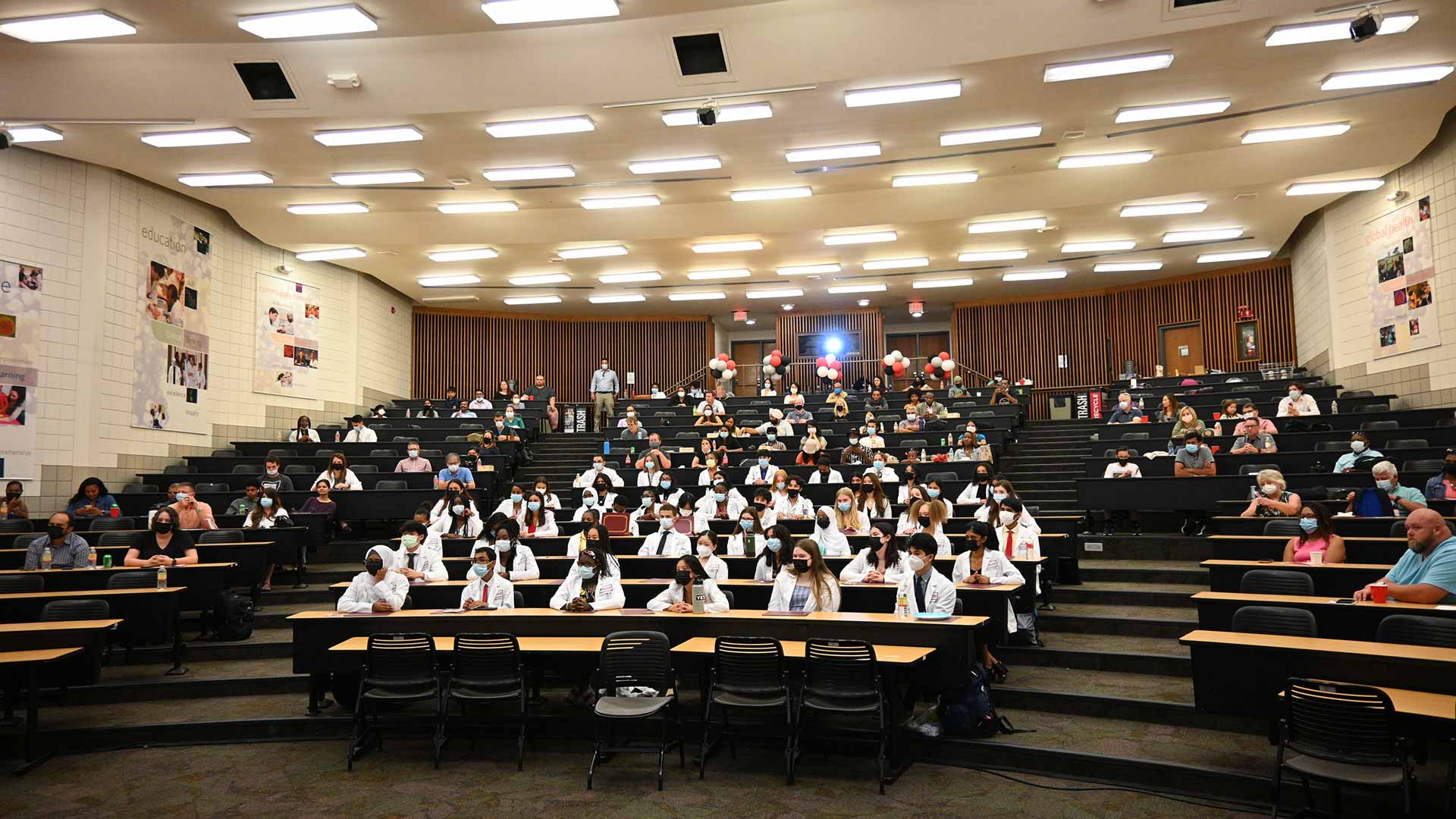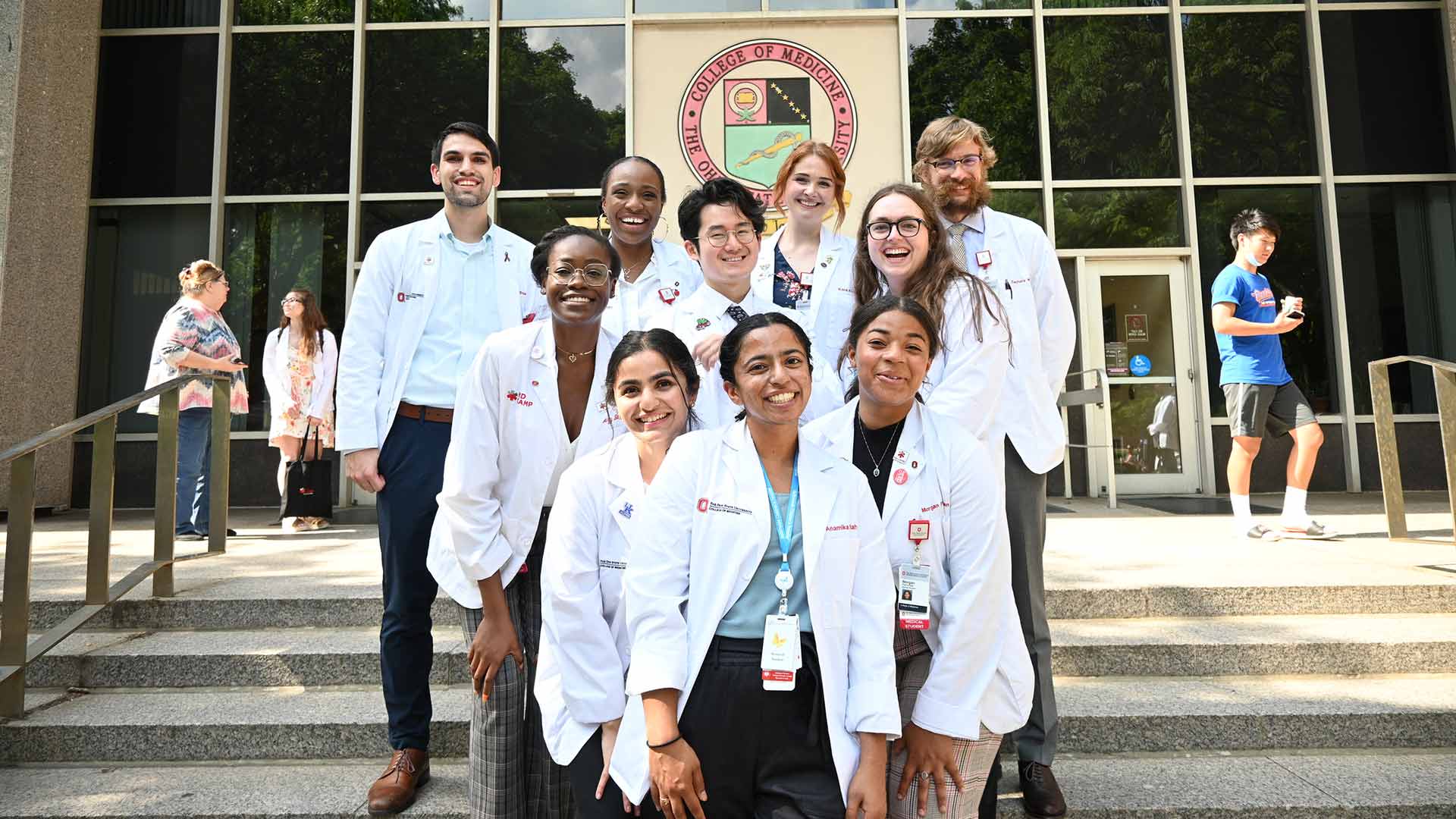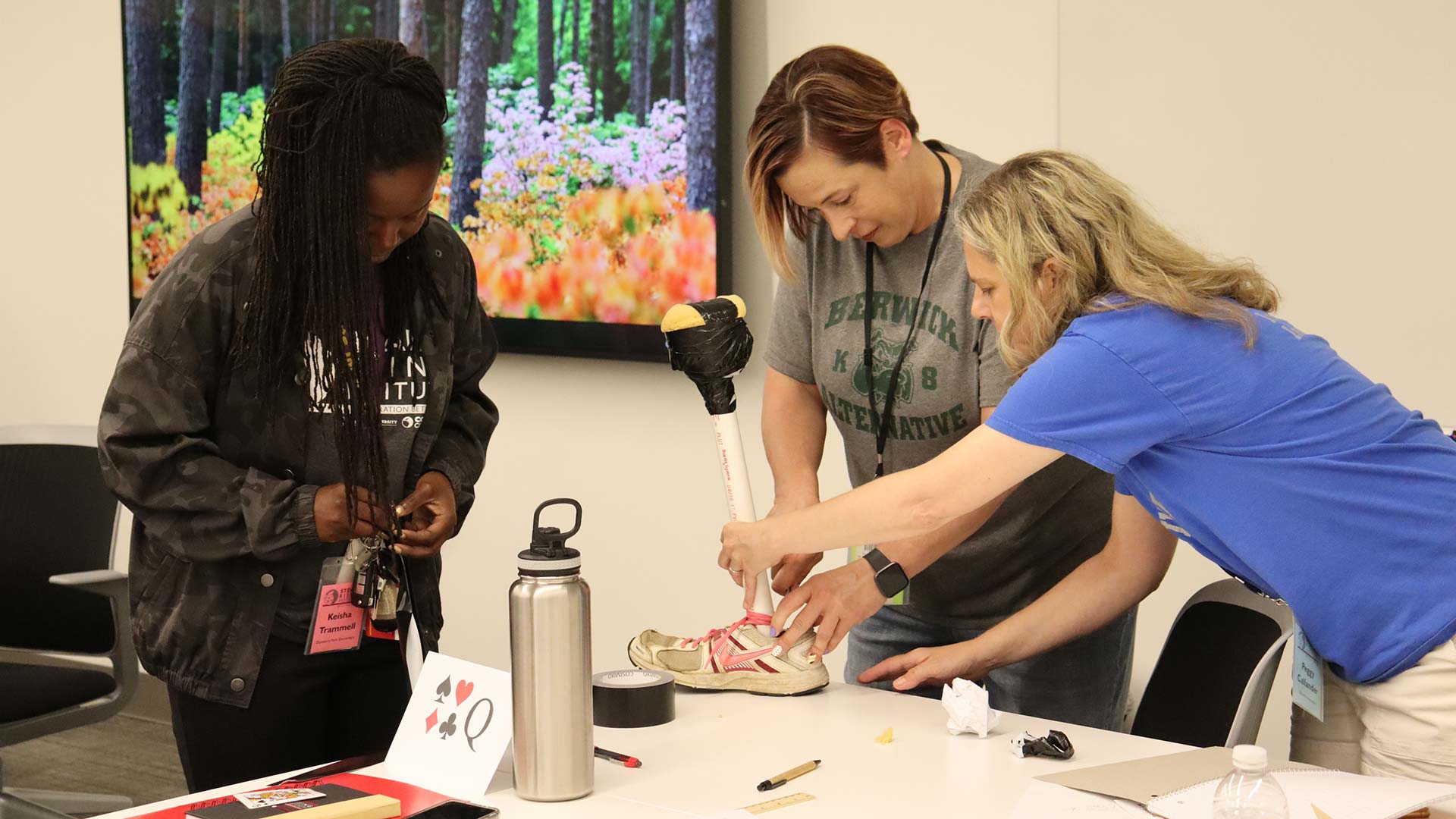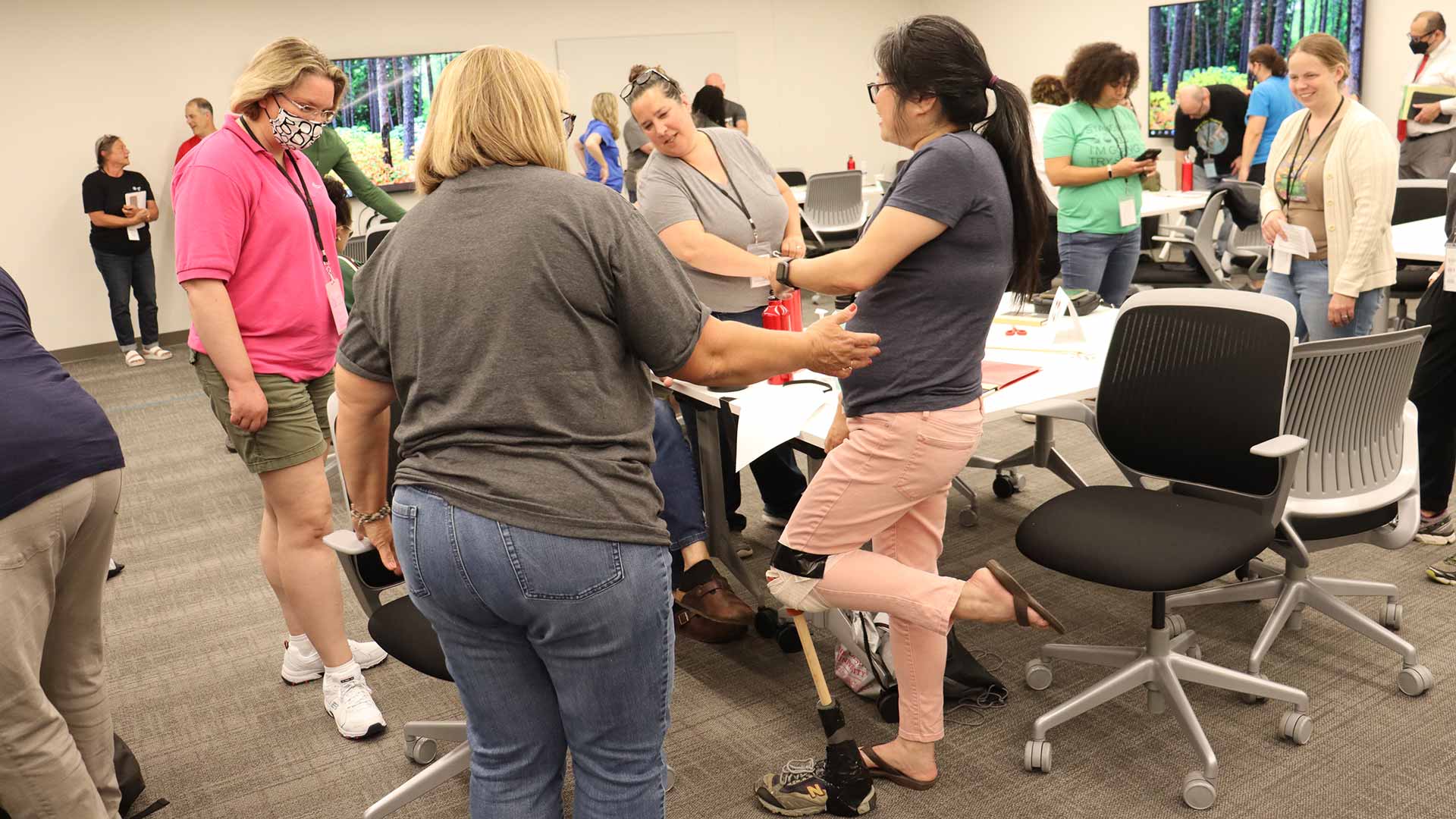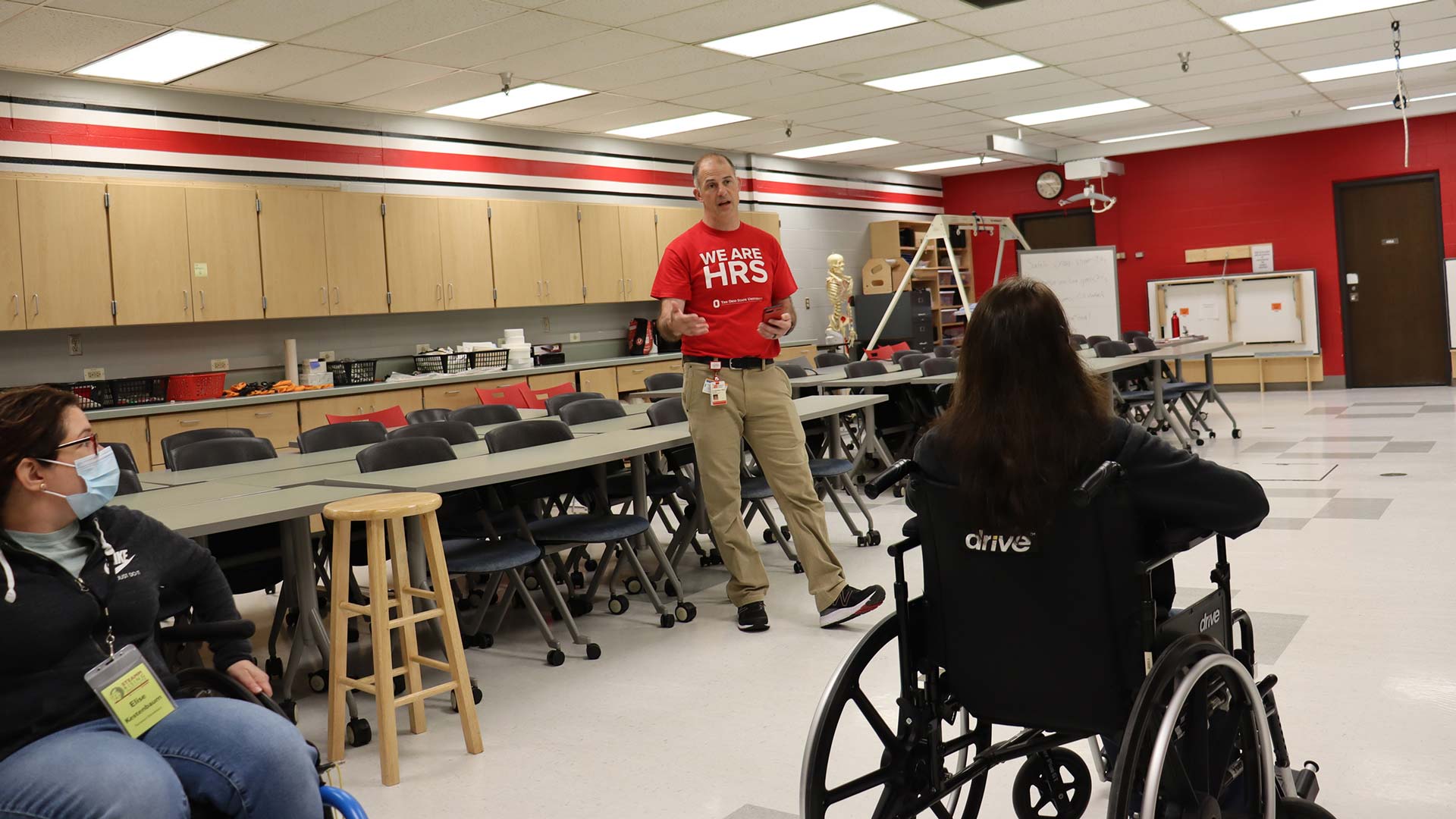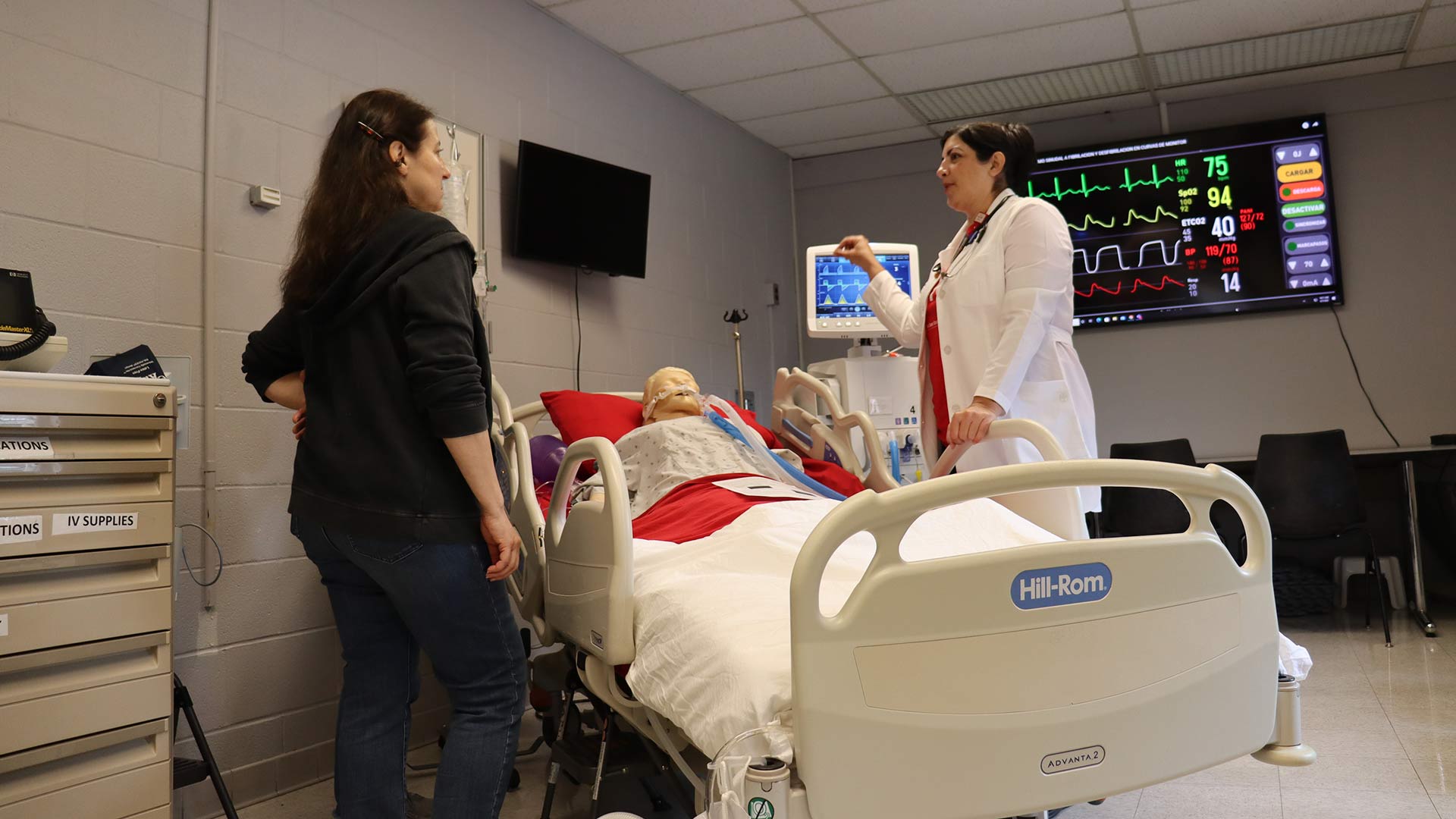
Spending a week studying the human brain — and then seeing one up close — may not be everyone’s cup of tea, but a group of high school students doing just that is learning hands-on and igniting their passion for science along the way.
The Explorations in Neuroscience Summer Camp at The Ohio State University College of Medicine and The Ohio State University Wexner Medical Center is designed for high school juniors and seniors interested in learning about the brain, spinal cord health and disease. Students spend the week attending presentations by clinicians on new techniques in treating nervous system disorders, such as spinal cord injury, Parkinson’s disease and others. They also take part in discussions about current topics in neuroscience and participate in hands-on lab sessions, including a brain study. Participants interact throughout the week with faculty and students at Ohio State who are carrying out neuroscience-related research.
“This camp has been very interactive, and I learned the most through the hands-on learning labs and activities” Emma, a 17-year-old Indian Creek High School student
The mission for the Explorations in Neuroscience Summer Camp is to provide substantial experiences and professional development activities to support future participation of high school students, including those typically underrepresented in neuroscience, in undergraduate neurological disease research, neuroscience majors and careers in neuroscience research. This year, 71 students (46 female, 21 male and 4 non-binary) from all over Ohio, Illinois and Indiana were accepted into the camp.
The program is led by Georgia Bishop, PhD, professor and vice chair of the Department of Neuroscience; Phoebe Long, program manager and Melissa Stenger, associate administrator in the School of Biomedical Sciences at the College of Medicine.
“We have spent extensive time over the past year brainstorming and strategizing ideas and initiatives to increase the diversity of our camp applicants,” Stenger says. “We still have a lot of work to do; however, we are excited to see all of the new applications from all over Ohio, and not just central Ohio.”
Campers pay a fee to attend the weeklong camp; however, there are anonymous donors who support the camp and financial need scholarships for camp attendees who couldn’t otherwise afford to attend.
At the end of the week, students discuss career pathways with graduate students in neuroscience and advisors from the neuroscience undergraduate major.
“I have had an interest in psychology and the brain,” says Madeline, a 17-year-old home-schooled high school student. “But through this experience, I realize there are so many ways you can apply an interest in the brain to a future career.”
Students also receive advice on how to succeed while going through Ohio State’s undergraduate programs.
“Before this camp, I had no idea what I wanted to do for college or where I wanted to go for school, but now I feel like I’ve found a new path for my future,” says Gabriel, a 17-year-old student at Columbus Academy.
Not only has this camp led high school students to find their passion in neuroscience, but it has also led many students to study neuroscience at Ohio State.
Hannah, a rising sophomore at Ohio State, attended the camp in 2019 as a student at Westerville Central High School. After attending the camp, she was offered an internship at Ohio State and spent the rest of her summer conducting neuroscience research. The internship was made available to students at the camp through the neuroscience department’s research grant to help minorities in the camp gain access to research opportunities.
“Another great thing that has come from the camp is that I met other students interested in neuroscience who now study alongside me at Ohio State,” Hannah says.
Along with Explorations in Neuroscience Summer Camp, two other College of Medicine summer camps are also providing STEM opportunities to high schoolers: MD Camp, the School of Health and Rehabilitation Sciences (HRS) Summer Camp and Cardiovascular Scholars camp.
MD Camp is a three-week summer program organized by second-year medical students in the College of Medicine. The program serves high school students who have a passion for medicine and typically come from historically excluded backgrounds. This year’s cohort includes 55 students, the largest cohort in the camp’s 17-year history. The students learn directly from our clinicians and faculty, shadowing physicians, participating in hands-on opportunities in our clinical skills labs and attending lectures involving medical school curriculum, professional development, social determinants of health, diversity in medicine and mental health education.
“The past three weeks have been absolutely wonderful and have solidified my interest in pursuing a career in health care,” shared a student who attended this year’s camp.
The School of Health and Rehabilitation Sciences launched a new summer camp aimed at introducing high school students — particularly students from Columbus City Schools and underrepresented minority groups — to a variety of health care professions. Through hands-on and interactive experiences with faculty and students, the summer camp participants learned about health care fields including nutrition, radiology, athletic training, occupational therapy and much more.
“We had 31 students in attendance for each day of HRS Camp and I am very excited to continue working with Columbus City Schools to reach an even larger number of students in the future,” shares Alix Stein, HRS recruitment coordinator.
Educating teachers to become champions for science
As well as educating students, the School of Health and Rehabilitation Sciences is training teachers on how to embed STEM-inspired thinking and problem-solving into their classrooms, as part of the STEAMM Rising program. STEAMM Rising Columbus is a new initiative to collectively develop STEAMM talent in Columbus and ensure that talent thrives in the university’s Innovation District and elsewhere. STEAMM stands for science, technology, engineering, arts, mathematics and medicine.
Columbus City Schools teachers across all grade levels go through professional development training to help them incorporate STEAMM in their classrooms. This program is a collaboration between The Ohio State University, the city of Columbus, Columbus City Schools and Columbus State Community College. Ohio State is committed to producing 22,500 graduates over the next 15 years in STEM fields such as health science, vital materials and computer science as part of this partnership and program.

Have a high schooler interested in a career in medicine and science?
To find out more about attending next year’s Explorations in Neuroscience Summer Camp, students and parents can visit the College of Medicine website.
Visit Now


